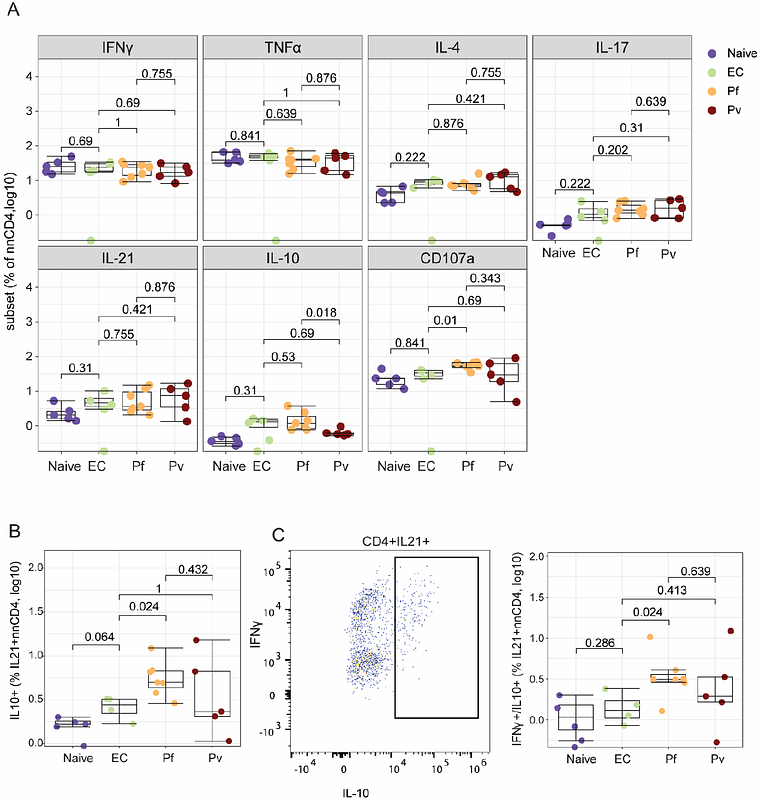Comparison of CD4 T cell response in Plasmodium falciparum and vivax malaria

Comparison of CD4 T cell response in Plasmodium falciparum and vivax malaria
Nalubega, M.; Soon, M. S.; Andrew, D.; Dooley, N.; Loughland, J.; Engwerda, C.; Kenangalem, E.; Price, R. N.; Minigo, G.; Anstey, N. M.; Oyong, D.; Boyle, M. J.
AbstractBackground: Plasmodium falciparum and P. vivax are parasites responsible for most malaria cases globally. In areas where these species co-exist, individuals gain protection from P. vivax more rapidly, and important biological differences between species may impact the immune response. CD4 T cells are key drivers of immunity to malaria, both as effector and helper cells, with T-follicular helper (Tfh) having key roles in antibody development. Comparative studies on CD4 T cell responses between these species are limited. Methods: We assessed CD4 T cells in adults with either P. falciparum or P. vivax malaria. Activation and proliferation of CD4 T cells were measured ex vivo, and functional capacity determined by intracellular cytokine staining by flow cytometry. Results: The phenotype, activation and proliferation of CD4 T cells and effector CD4 T cell subsets were comparable between species. However, within the peripheral (p)Tfh cell compartment, there was evidence for a skew towards pTfh1 cells in P. falciparum, and pTfh2 cells in P. vivax. Additionally, in P. falciparum, increased IL-10 production was detected, including within IL-21 producing CD4 T cells. Conclusion: While activation and function of CD4 T cells in malaria are largely comparable, some species-dependent responses are detected within the pTfh cell compartment that may impact antibody development.